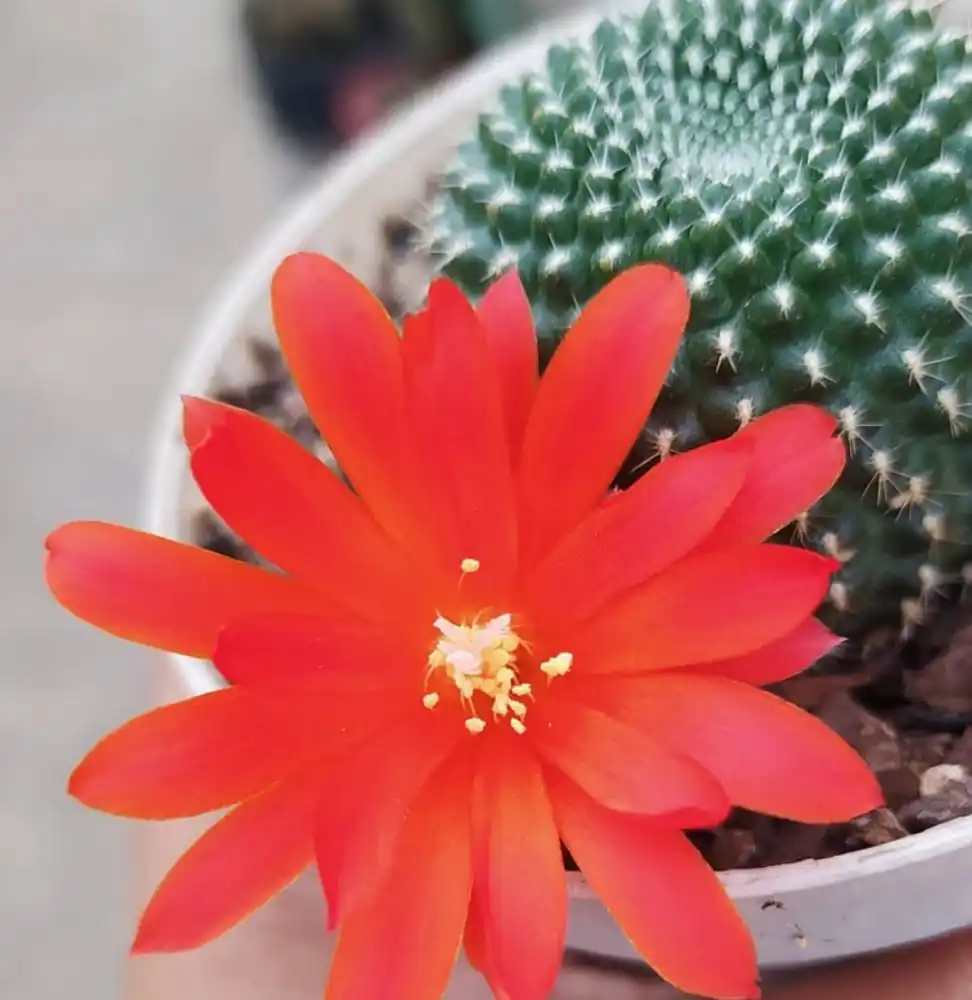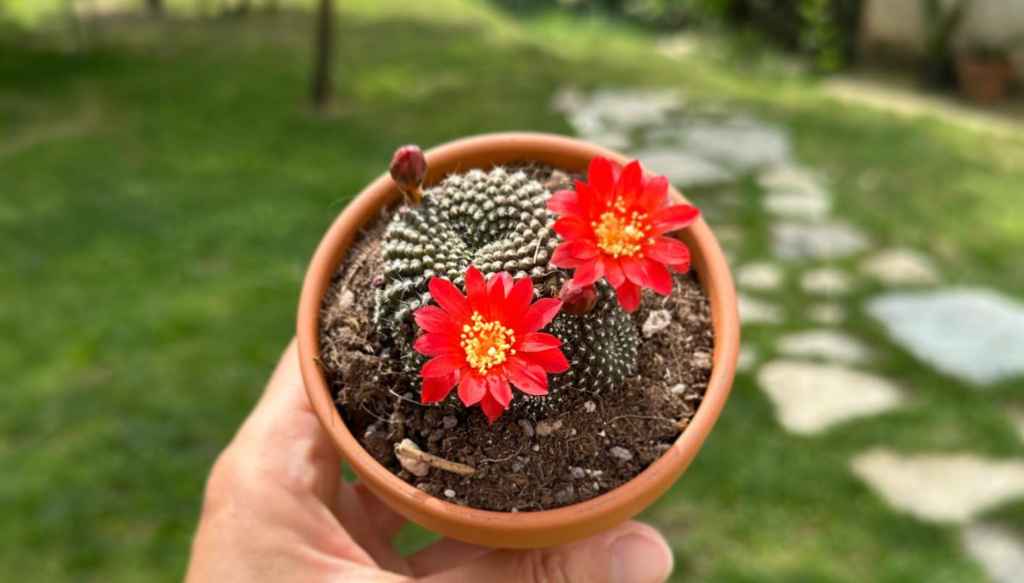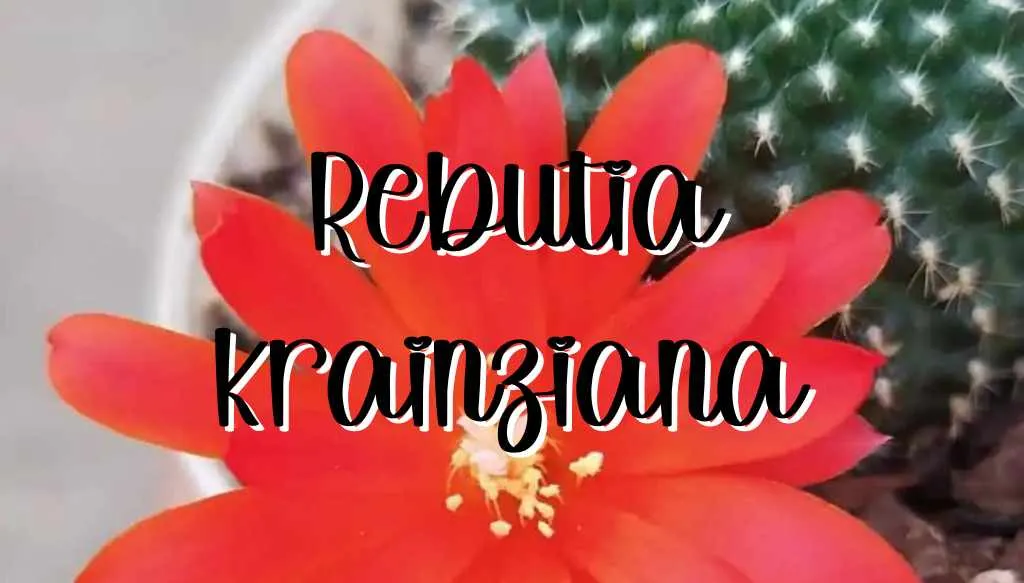Embark on a captivating journey with Rebutia krainziana, a fascinating species of flowering cactus from the landscapes of South America. Known for its unique form and vibrant flowers, this cactus brings a dash of exotic charm to any plant collection. This guide offers an in-depth look into understanding, caring for, and propagating your Rebutia krainziana.

Dig in!

Introduction to Rebutia krainziana
Rebutia krainziana, also known by its accepted scientific name Rebutia marsoneri, hails from the mountainous regions of Argentina. This fascinating globular cactus, which forms clumps, belongs to the Cactaceae family and the Rebutia genus.
Unique Characteristics
Rebutia krainziana is a standout cactus species that boasts a dark green stem color, complemented by large, intensely red, yellow-throated flowers. The stems of this globular cactus can reach up to 10cm in height and 7 cm in diameter, with clumps spreading 10-15cm wide. Additionally, the cactus features spirally arranged tubercles in a ratio of 8:13.
Adaptations
This cactus has adapted remarkably well to its high-altitude environment in Argentina, evolving to endure intense sunlight, limited water resources, and cold temperatures. Its thick, fleshy stems store water for long periods, while its spines provide a degree of shade, reducing water loss and protecting the cactus from herbivores.
Physical Characteristics and Blooming
Rebutia krainziana, typically growing up to 10cm tall and 7cm wide, forms clumps 10-15cm wide. It’s blanketed in thin, soft white spines that beautifully contrast against its flowers.
This cactus is celebrated for its impressive and consistent flowering. The flowers, measuring 3.5 cm wide, develop from the base of each head, creating a stunning display. While the ‘normal’ form has bright orange-red flowers, color variations ranging from dark red, orange, yellow to pure white have been observed.
Blooming Season
One of the earliest rebutias to flower, its blooming season typically commences in spring. The blossoming is stimulated by increased daylight hours and a shift in temperature, reflecting its natural high-altitude habitat.
Growth and Care Instructions
Growing at a moderate pace, the Rebutia krainziana often takes a few years to reach its full size of approximately 4 inches tall. It primarily grows during the warmer seasons, from late spring to early fall, and enters a period of dormancy during winter.
Watering
Here are some tips to know when it’s time to water Rebutia krainziana:
- Observe the color of the body. When Rebutia krainziana needs water, its body will look slightly deflated and wrinkled rather than plump and firm. The vibrant green color will also fade and look paler.
- Check the soil moisture. Stick your finger into the soil to gauge moisture levels. If the top 1-2 inches of soil feel completely dry, it’s a sign the plant needs water. These cacti prefer thorough dryness between waterings.
- Consider environmental factors. Hot and dry weather, bright light exposure, and warmer temperatures will cause Rebutia krainziana to use up soil moisture faster, meaning more frequent watering is needed. Cooler weather means you can water less.
- Look for sunken spines. When dehydrated, the spines may appear sunken into the body rather than plump and raised. This acts as a visible indicator it’s time to water.
- Wait 2-3 weeks after previous watering. Rebutia krainziana store water in their bodies, so they only need infrequent, thorough watering around every 2-3 weeks.
Pay close attention to visual cues and feel the soil rather than watering on a fixed schedule. This ensures the cactus gets the moisture it needs while avoiding overwatering.
When you’re rooting or transplanting your succulents and cacti, use SUPERthrive to help reduce the chance of transplant shock and grow a strong root system.
Light
This cactus thrives in full sun and appreciates well-drained clay soil with a pH of around 6.5. During summer, it requires regular watering but be mindful not to overwater. During winter, it prefers to be kept dry. Hardy to USDA zones 9-11, the cactus can handle temperatures down to -4°C (24.8°F).
Fertilizer and Propagation
While the Rebutia krainziana doesn’t require much fertilization, you can use a low nitrogen cactus or succulent fertilizer sparingly during the growing season. Too much fertilizer can lead to lush but weak growth and fewer flowers.

Succulent fertilizer available to purchase on Etsy.
Propagation of this cactus is best done by separating offsets or by sowing seeds.
Common Problems and Indoor Growth
Common problems include overwatering, which may lead to root rot, and inadequate light. Pests such as mealybugs and scale insects can also be a nuisance. With the right conditions, you can grow this cactus indoors. Additionally, it’s not known to be toxic to cats, dogs, or people.
As an Amazon Associate I earn from qualifying purchases at no additional cost to you.
Fix the pest problem on your succulents and cacti with these popular insecticides.
Dormancy
During dormancy, the plant’s growth slows, and it requires less water. This is a natural process that usually happens in the cooler winter months.
Whether you’re a seasoned plant enthusiast or a beginner looking to introduce a touch of the exotic to your home, the Rebutia krainziana is an excellent choice. This drought-tolerant, clump-forming cactus is safe for humans and known for its consistent and prolific flowering. With careful attention and care, this beautiful cactus can thrive and bring joy for many years.





